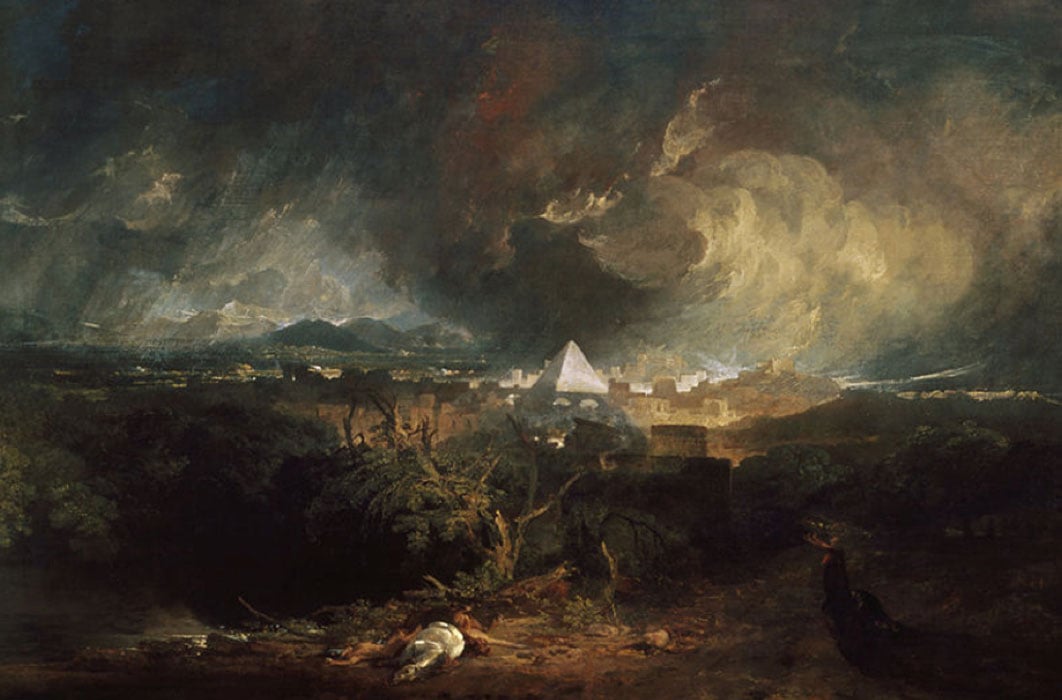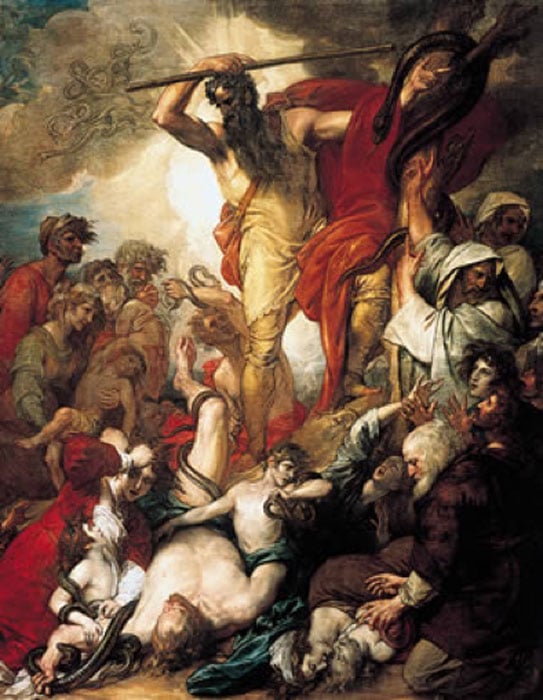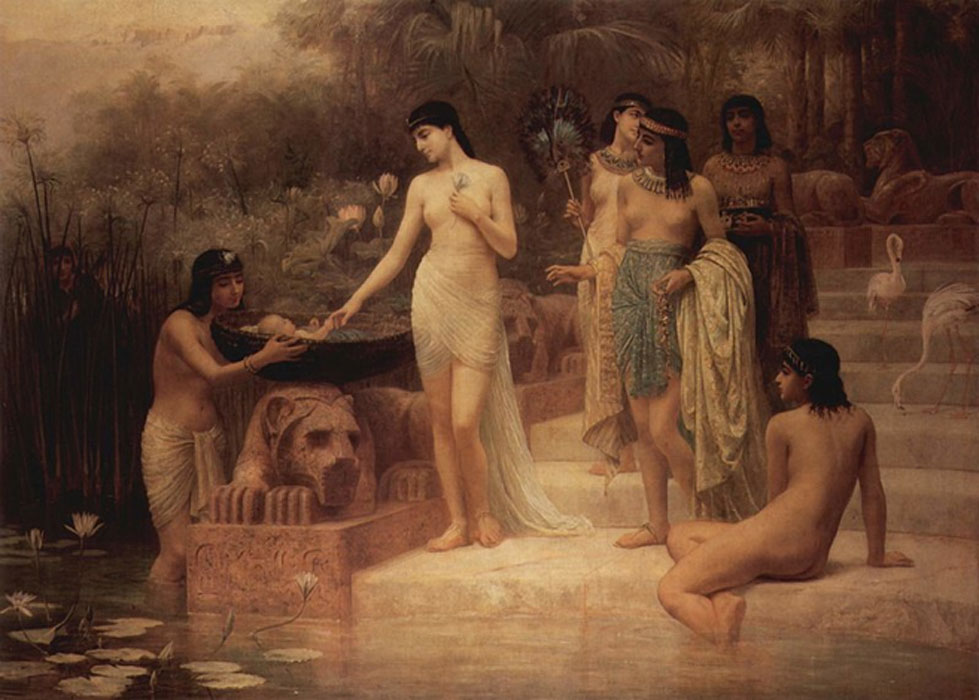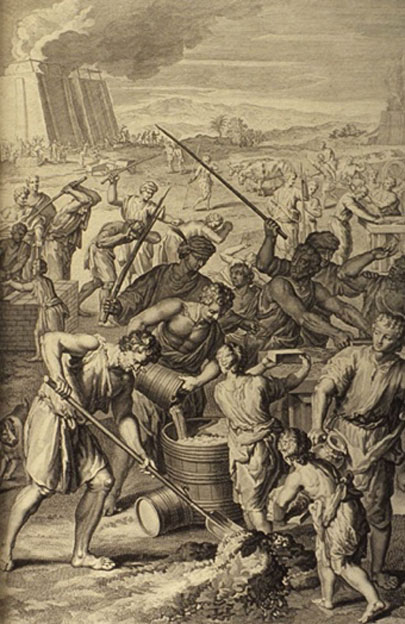
Unpacking the Ten Plagues of Egypt: A Scientific Explanation
Could there be a scientific explanation and a sequence of natural disasters that caused the 10 Plagues of Egypt? Of all the characters in the Old Testament, Moses stands out, as a leader, as a lawgiver and as a prophet. It was Moses who was given the Ten Commandments and it was Moses who wrote the first five books of the Bible. Moses is the most important prophet in Judaism and features highly in Christianity. He is revered in Islam as one of the greatest men of all time and it was to Moses that Allah revealed the Torah; it is also believed that Moses foretold the coming of the prophet Mohammed. It was Moses who led the people of Israel out of their bondage in Egypt.

Moses lifts up the brass serpent, curing the Israelites from poisonous snake bites in a painting by Benjamin West (Public Domain)
The Policy of the Pharaoh
The book of Exodus tells us that there was a new king ruling Egypt who didn’t know Joseph. Concerned by the number of ‘sons of Israel’ in Egypt, the new pharaoh had the Israelites build ‘store cities’ at Pithom and Raamses in the eastern part of the Nile Delta. In an effort to control the growing population the pharaoh ordered all new-born male children to be put to death, but the Hebrew midwives, fearing God more than the pharaoh, refused. Exodus then tells us that the pharaoh ordered all the male children to be thrown into the river. The Bible suggests that it was the possibility of the thousands of Israelites, living and working in the Delta, joining up with a potential enemy against Egypt, that made the pharaoh press-gang them into forced labor, but the Judaic texts say it was a warning from the pharaoh’s soothsayers that prompted the action. It was here, in the land of Goshen, in the Delta, that Moses was born.
“And there goeth a man of the house of Levi, and he taketh the daughter of Levi, and the woman conceiveth, and beareth a son” (Youngs Literal Translation).

Pharaoh's daughter finds Moses in the Nile by Edwin Long (1886)(Public Domain)
Moses the Redeemer
The story of the baby Moses in the basket is well known, as is his discovery by the pharaoh’s daughter, and how, when he was older, he was forced to flee Egypt after killing an overseer. After many years, Moses, now married, was instructed by God to return to Egypt to free the proto-Israelites. According to Exodus, Moses told the king of Egypt that terrible afflictions would strike the land if he did not let the Israelites leave. The pharaoh’s immediate response was to increase the workload of the enslaved Hebrew people. Moses tried again, this time using his ‘rod’ to turn the river into blood. Each time the pharaoh refused to let the Hebrews go, a new plague was visited upon the people of the Nile. First was the blood, then came frogs, then lice. After the lice came the flies and then the pestilence. Boils followed, then hail, then locusts, and after the locusts came the darkness. Finally, it was the firstborn child who was taken.
- Mastema – The ‘Persecutor’ of God
- 4 Completely Different Versions of the Story of Moses
- Pharaoh Ramses’ Anti-Israelite Policy Now Explained
The 10 plagues of Egypt and the exodus that followed them have been well documented by Hollywood, and most people would leave them there – in the realm of mythology and fantasy, rather than in the world of fact. Why is this? Largely because there appears to be no Egyptian record of such a catastrophic event taking place. This doesn’t mean that it did not happen, in fact, something as negative as the plagues and the exodus would have been played down by the Egyptians. Masters of spin, the Egyptians were constantly tweaking their history so that everything was good. For the Egyptians the ideal was the state of Ma’at, a universal harmony. Ma’at was at one time justice and truth, while also being a state of balance and order. It was the feather of Ma’at weighed against one’s heart that decided whether or not one made it to eternity. This was what the Egyptians lived by, this state of balance. It was the king or the pharaoh’s job to maintain Ma’at. Everything within the borders of Egypt was order and balance, while outside was chaos and disorder. The Egyptians would never have given any space to writing up the plagues.





